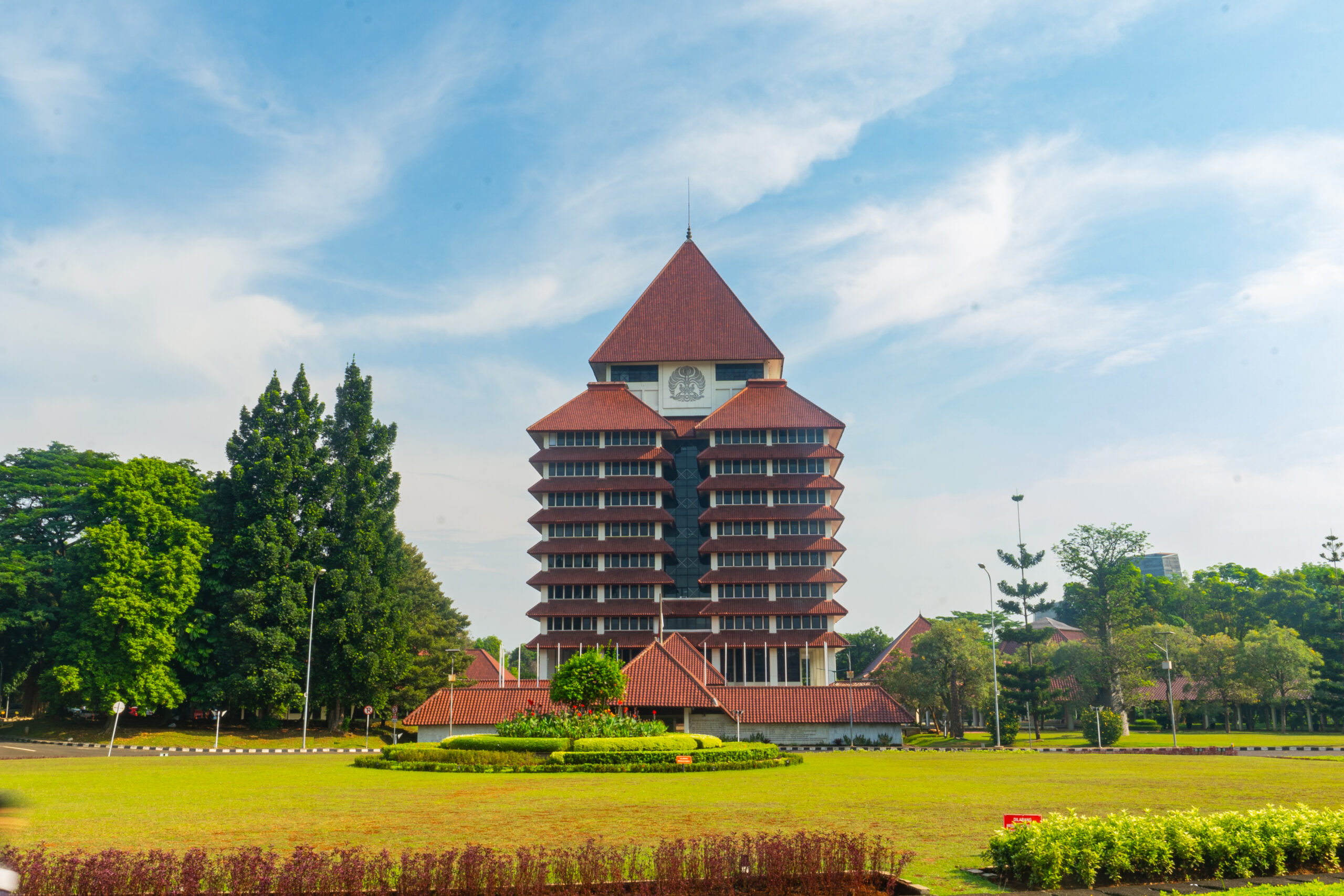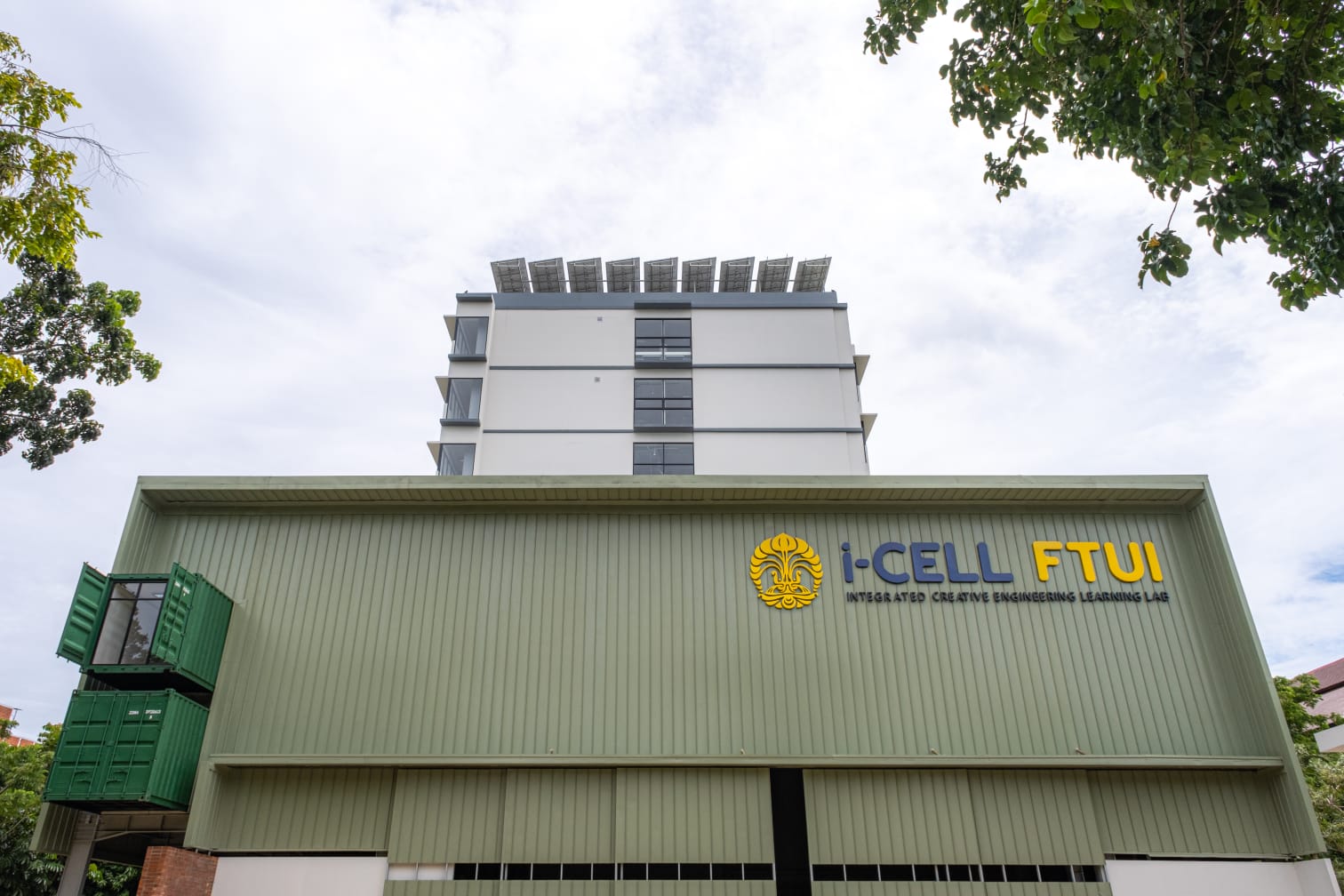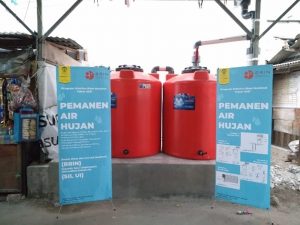
Water is a crucial resource because it is the main support for human life. Currently the risk of water crisis is starting to be experienced by coastal communities in big cities. Fulfillment of clean water is a major challenge because environmental conditions are starting to degrade. In line with the direction of national development and to answer these challenges, the School of Environmental Sciences Universitas Indonesia (SIL UI) conducted research on the use of rainwater. This research is a flagshipand received funding in the National Research Priority program (PRN) under the coordination of the National Research and Innovation Agency (BRIN). Through this program, Universitas Indonesia participates in the achievement of SDGs 6 “clean water and sanitation for all”.
The School of Environmental Sciences University of Indonesia team, with Dr. Hayati Sari Hasibuan as the leader applies Rainwater Harvesting System (SPAH) technology as an effort to fulfill clean water and electrolysis technology that converts clean water from Rainwater Harvesting System into potable water. Rainwater Harvesting System is a method or technology used to collect rainwater from building roofs, ground surfaces, roads or rock hills and is used as a source of clean water supply.
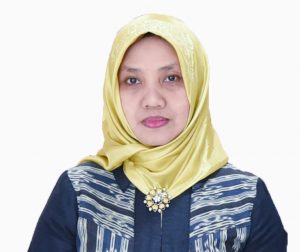
Sari explained that rainwater minimizes environmental impact because the use of instruments such as roofs, parking lots, parks, etc. can save on the procurement of new instruments. “By soaking excess rainwater into the ground, the volume of flooding on urban roads can be reduced. In addition, the collected rainwater is relatively cleaner and the quality meets the requirements for what is categorized as clean water. This can be a reservoir of clean water if there is a disturbance in the clean water supply system, especially during a natural disaster. Rainwater is a very important water source, especially in areas where there is no clean water supply system, low surface water quality, and no groundwater available,” said the The School of Environmental Sciences University of Indonesia lecturer who has urban environment expertise.
SPAH includes a rain catchment area (collection area), rain water channel that drains rain water from the rain catchment area to the storage tank (conveyance), filters, reservoir (storage tank), drains, and pumps. The rainwater collection area and the materials used affect the collection efficiency and quality of rainwater. The materials used to catch rainwater must be safe and able to maintain the quality of rainwater. Generally, the materials used are anti-rust, such as aluminum, galvanized iron, concrete, or fiberglass shingles.
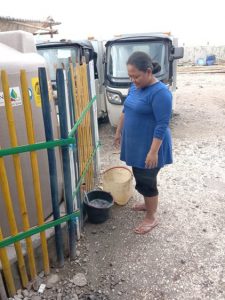
The School of Environment Science Universitas Indonesia team built Rainwater Harvesting System installations in two fishing villages in Kalibaru Village, Cilincing District, North Jakarta, namely RW/01 and RW/15. This activity takes place during October–December 2021 and was inaugurated on Wednesday (22/12). This program was well received by the DKI Jakarta Provincial Government, including the Regional Development Planning Agency (Bappeda), the Environment Agency, the Mayor of North Jakarta, and the Jakarta SDGs Center. In this program, The School of Environment Science Universitas Indonesia students were involved in carrying out community service in the form of rain water harvesting (RWH) education funded by Universitas Indonesia.
The Rainwater Harvesting System was chosen as an effort to fulfill clean water needs because it can be done easily using affordable materials and tools. Tools and materials used communally include 2000 L water tanks or reservoirs, pipes, gutters, faucet stoppers, plastic balls, and dacron or filter paper. The A Rainwater Harvesting System can also be done individually on a household scale by using simple tools and materials, such as gallons of drinking water or buckets as rainwater storage containers.
“In the process of harvesting rainwater, it is important to pay attention to the Sanitary of the reservoir. If the dry season passes, the first drain of water should be carried out for 15-20 minutes to clean the pipeline from dirt on the roof. If it rains a little, the user must clean the roof and check the condition of the dacron. The maintenance and care of this SPAH is carried out periodically depending on the rainy season,” said Sari.
Sari hopes that the use of The Rainwater Harvesting System in Cilincing can replace the residents’ need for water pipes because rainwater has many benefits. In addition to meeting the need for clean water, The School of Environment Science Universitas Indonesia community service also seeks to reduce stuntingrates for residents on the Cilincing coast. “Rain water has health benefits for the community because it helps regenerate cells. The use of rainwater also reduces the cost of paid water and groundwater use. The Rainwater Harvesting System is also expected to meet the clean water needs of fishing communities so that clean water consumed can reduce stuntingrates in Kalibaru,” he said. The research he researched was guided by Prof. Ignatius Sutapa as the Coordinator of PRN StuntingBRIN and Dr. Gunawan Pratama Yoga as the reviewerof PRN BRIN.
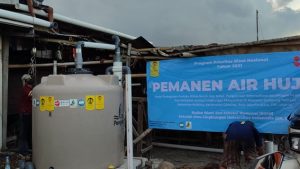
One of the serious threats to health area improvement, especially the quality of future generations, is stunting. The average stuntingrate in Indonesia is 37.2%. According to WHO (World Health Organization) standards, this percentage is included in the heavy category. Therefore, the rainwater Harvesting System is expected to be able to overcome this problem, especially for the people on the coast of Jakarta. Of course, healthy living starts with proper water consumption. By harvesting rainwater, residents can play a role in improving health and environmental sustainability.
For more information refer to:

